[Restoration of Paulownia Box] How’s The Hakogaki on An Old Paulownia Box Retained?

[Restoration of Paulownia Box] How’s The Hakogaki on An Old Paulownia Box Retained?
[Restoration of Paulownia Box] How’s The Hakogaki on An Old Paulownia Box Retained?
As a storage box for a kakejiku or a tea service paulownia boxes have been used since the old days for their excellent moisture-proof, insect-repellent and fire-resistant properties.
Then a common question about paulownia boxes are this,
‘The title lettering and sign and seal are on the lid of the paulownia box so I’d like to keep the information as they are, but still I want to replace the worn-out box. Is there any solution to that?’
The reason why I picked the question above is the fact that kakejikus produced after Meiji period in particular are generally stored in a paulownia box which in most cases, holds the record of the title and name of the painter and the written information is meant to be kept since they’ll be the vital key to evaluate the artwork of kakejikus.
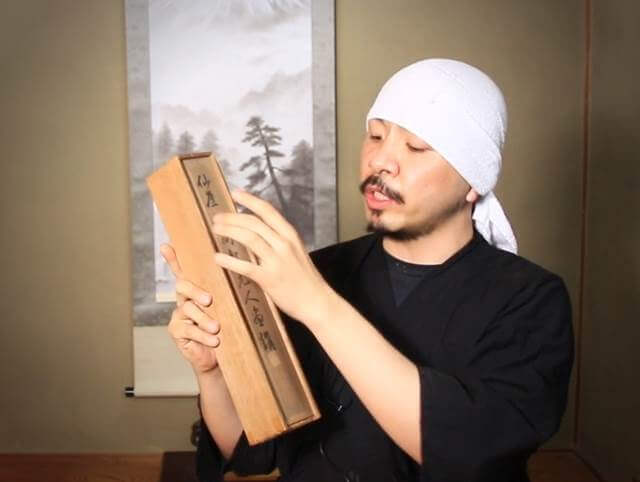
The problem is a paulownia box which has been worn out can’t play its major role which is safekeeping.
In such cases,
‘I want to replace this worn-out paulownia box, at the same time I wish to keep the written information on this old box. Is there any win – win answer for this?’
The above issue is raised.
To make a long story short, the answer is yes, you can win them all.
By cutting off the part of the lid where the information is written and inlaying it into a new paulownia box whose ”matching part has been already removed to fit the part of the old box.
A fine craftsmanship is required for this task though, the paulownia box manufacturer we are dealing with is capable of this procedure and has a number of the achievements.
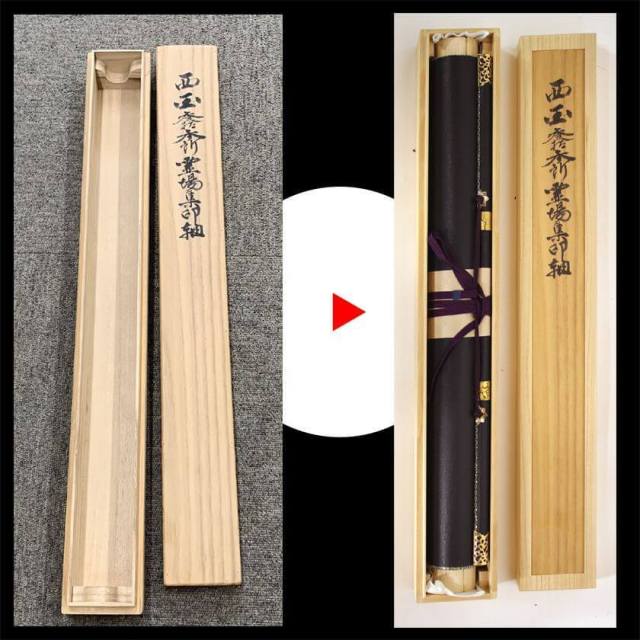
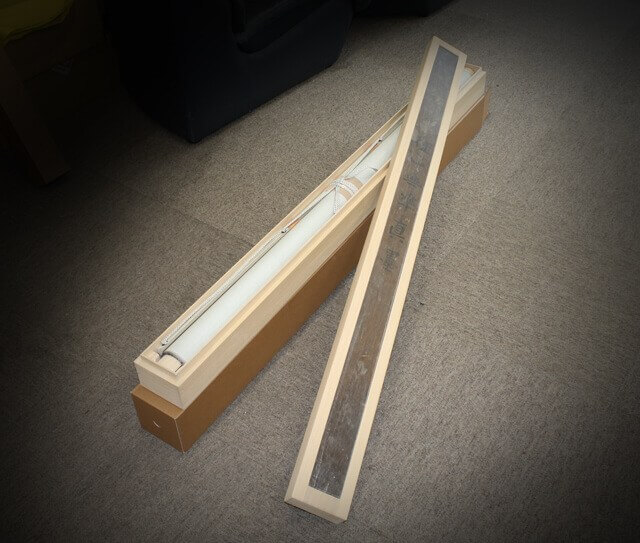
Our present customer requested a restoration of their kakejiku also agreed to save the written information on their paulownia box following my suggestion.
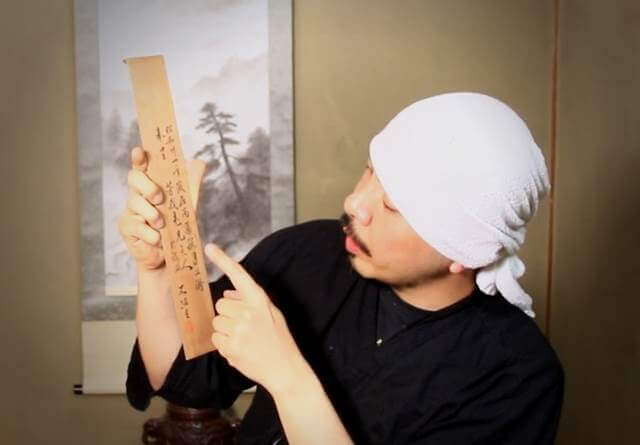
Here is the actual new paulownia box after having the replacing job done. This discolored part is a part of the old paulownia box.
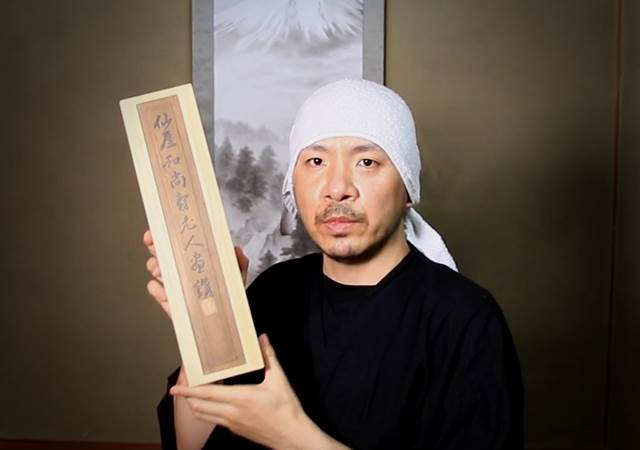
I must say It’s an amazing craftsmanship. The part of an old paulownia box holding written information is cut away to fit into the same part of a new paulownia box that has been accurately measured and cut to match with, then the surrounding parts are assembled. This is an example of a high end artisanal. I’m very much impressed each time when I place an older.
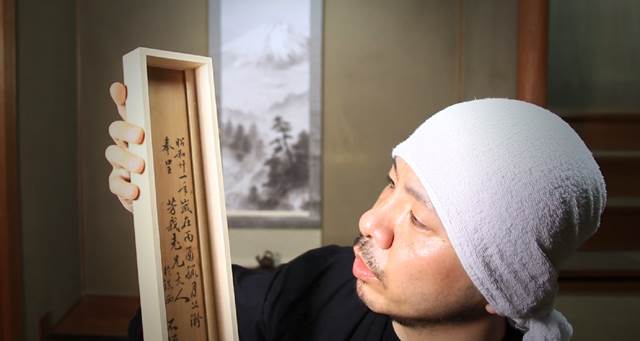
With this method, not only can you save the information written on your old paulownia box, but your new paulownia box secures your kakejiku playing its original role.
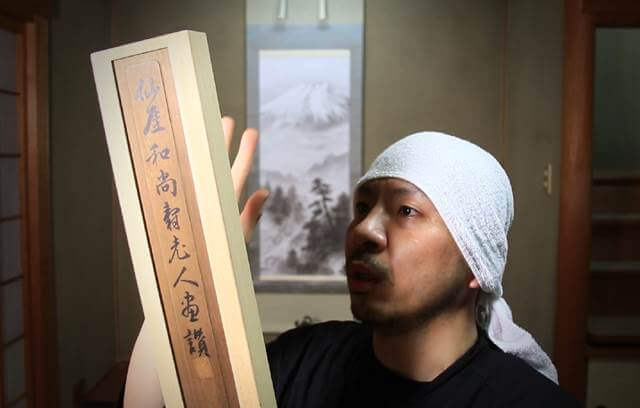
When we received the mounting request for a kakejiku this time, as the kakejiku was heavily damaged we also suggested to the customer storage with a futomaki/wooden roller clamp. It enlarges the diameter of the roller rod of kakejiku and reduces the burden which falls onto the kakejiku.
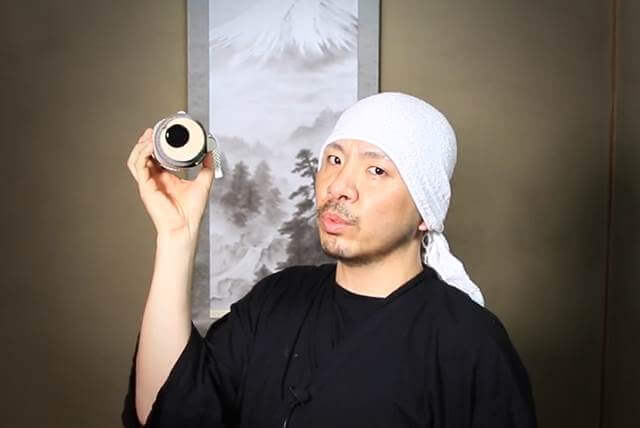
The diameter of a kakejiku rolled up with a futomaki is enlarged so the paulownia box for it also becomes larger proportionately to the size of futomaki.
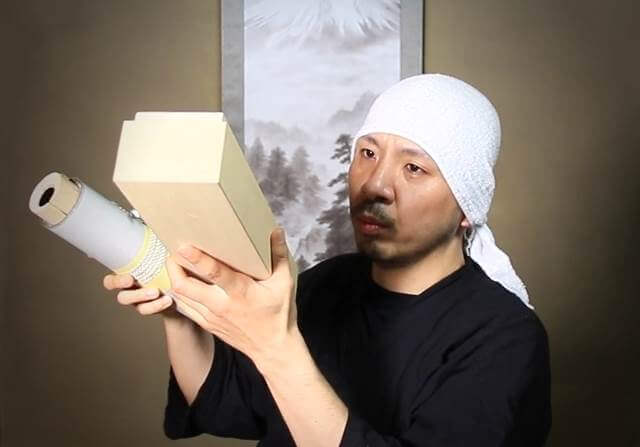
A paulownia box used for securing futomaki.
This time I introduced a case of the replacement work for a futomaki sized box. Of course, the replacement also can be done for a regular size paulownia box so please don’t hesitate to contact us if you have any request.
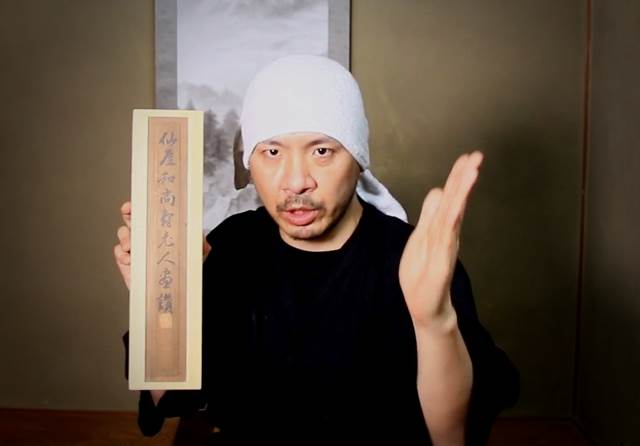
For further details of this topic, please refer to a video below. (English subtitle available)
Video: The hakogaki transplantation surgery on a paulownia box?

